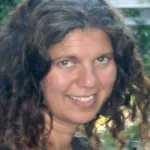
Dr. Ayelet Voskoboynik is an expert in the field of comparative immunology and stem cell biology. Her studies significantly contribute to the development of the colonial chordate Botryllus schlosseri as a model system to study stem cell biology, aging, and the evolution of immunity.
Ayelet led the Botryllus genome project and developed a novel method to obtain a synthetic long read sequence (SLR). She isolated BHF, the gene that encodes self/non-self and determines “graft” outcomes in this organism. Ayelet identified the first adult stem cell niche and the first germline stem cell niche in Botryllus, led a comprehensive cellular, molecular, and functional characterization of the Botryllus immune system, and investigated the molecular clock and neurodegeneration pathways in young and old colonies. Recently, she led an international effort to build the Tabula compositi chordate, an atlas of Botryllus embryogenesis and blastogenesis, revealing unique molecular landscapes for each developmental mode. Dr. Voskoboynik work has opened the door to a better understanding of the evolution of stem cell and immune cell properties during development, regeneration, transplantation, and aging.
The lab studies several stem cell interrelated phenomena using the colonial chordate, Botryllus schlosseri. The adult stem cells of Botryllus schlosseri mediate formation of all body organs de-novo every week. This includes formation of heart, central nervous system, respiration system, digestive system, thyroid like gland, ovary and testis. Under certain conditions, B. schlosseri can even regenerate its body from the vasculature alone. This species which has a chordate larval stage and an invertebrate adult form, is the closest living relative to Homo sapiens that maintains this unique regeneration capacities throughout life. In addition to their extensive regeneration capacities, in Botryllus chimeras the adult circulating stem cells of one partner can compete and replace the germ line and/or the soma of the other partner (termed germ line or somatic stem cell parasitism). This ability to replace host tissues follows genetic (heritable) hierarchies of winner strain that replace loser strain tissues.
The lab uses genetic, genomic, and cell biological approaches to investigate: The evolutionary molecular mechanisms that regulate the decline of tissue regenerative potential during aging and allogeneic stem cell competition in host.
The lab is located at Stanford’s Hopkins Marine Station on the Monterey Peninsula.
